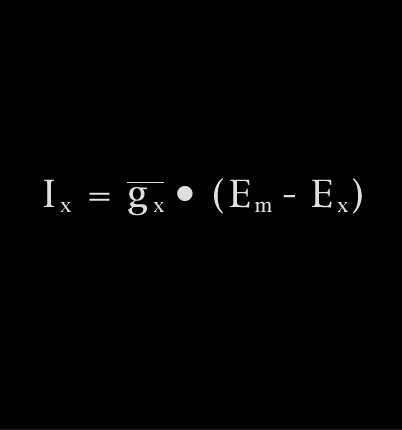The current generated by the transmembrane movement of the individual ions (Ix) reflects the product of the mean conductance of that ion (gx) and the electrical driving force for that ion. The electrical driving force is defined as the difference between the transmembrane potential (Em) and the equilibrium potential (Ex) for that ion.

